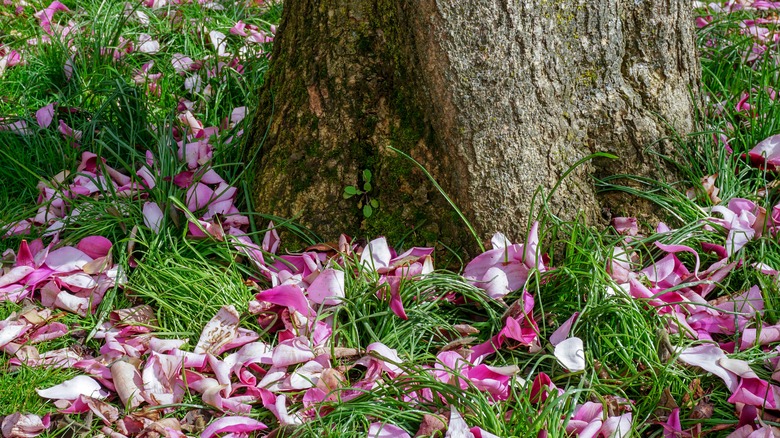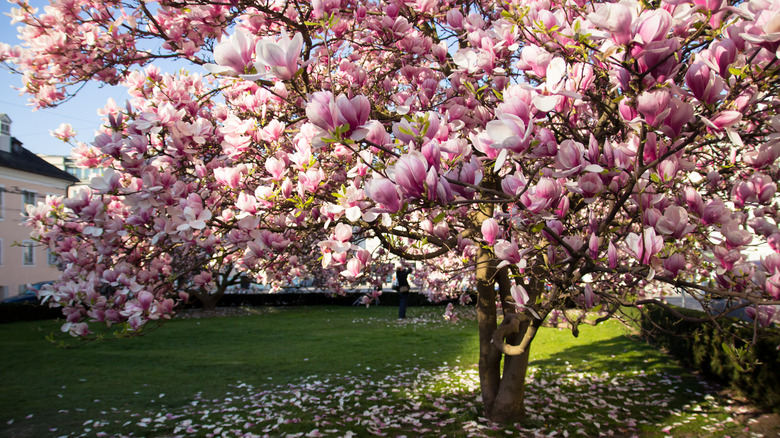Garden Trees, Shrubs & Vines
Janelle Ward
Magnolias are the quintessential southern flower, recognized for their beautiful blossoms and sweet fragrance. While they are relatively low-maintenance, magnolia trees still need to be cared for to make sure they grow to their full potential. These trees can reach heights of more than 80 feet, and such growth can only be sustained by thick, wide-reaching roots underneath. A magnolia’s entire root system must be accounted for when fertilizing, so don’t concentrate the entire formula solely around the trunk when doing so. Instead, spread the fertilizer evenly within the tree’s drip line, which is the invisible outermost circumference of a tree determined by the length of the widest circle of branches.
A magnolia tree’s health, especially in its early stages of life, can depend on appropriate fertilization. Therefore, using the proper fertilizing technique will help your tree look its best, leading to new growth that consists of healthier foliage, perkier flowers, and an overall prettier appearance.
Make sure your fertilizer is spread wide enough

P.Cartwright/Shutterstock
A detrimental mistake a gardener can make when caring for a magnolia tree is not spreading fertilizer wide enough. Spread your fertilizer no less than 6 to 10 inches from your magnolia’s trunk, ideally reaching as far as the tree’s drip line. To determine your magnolia’s drip line, find the branches positioned all around the tree that stretch the farthest from its base. The invisible circle that the ends of these branches form on the ground represents the tree’s drip line, named for the way water will drip off the branches into this area as it rains. Measure the distance between the tree’s center and the tips of the tree’s farthest-stretching branches to get a more exact estimate of where to apply your fertilizer, remembering to leave some space fertilizer-free near your magnolia’s trunk.
Just as magnolia trees can reach incredible heights, their roots can spread to great lengths as they age, sometimes extending 40 feet long underneath the soil. The tree’s root system grows deeper and wider with time, so adjust the width of your fertilizer application site as your tree gets older to maximize its health.




